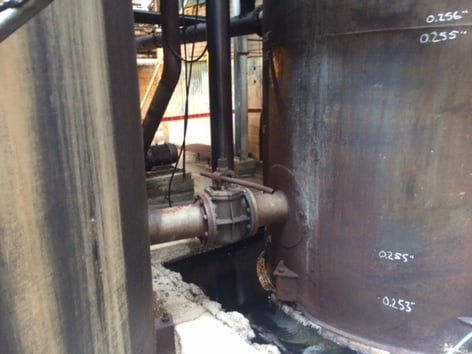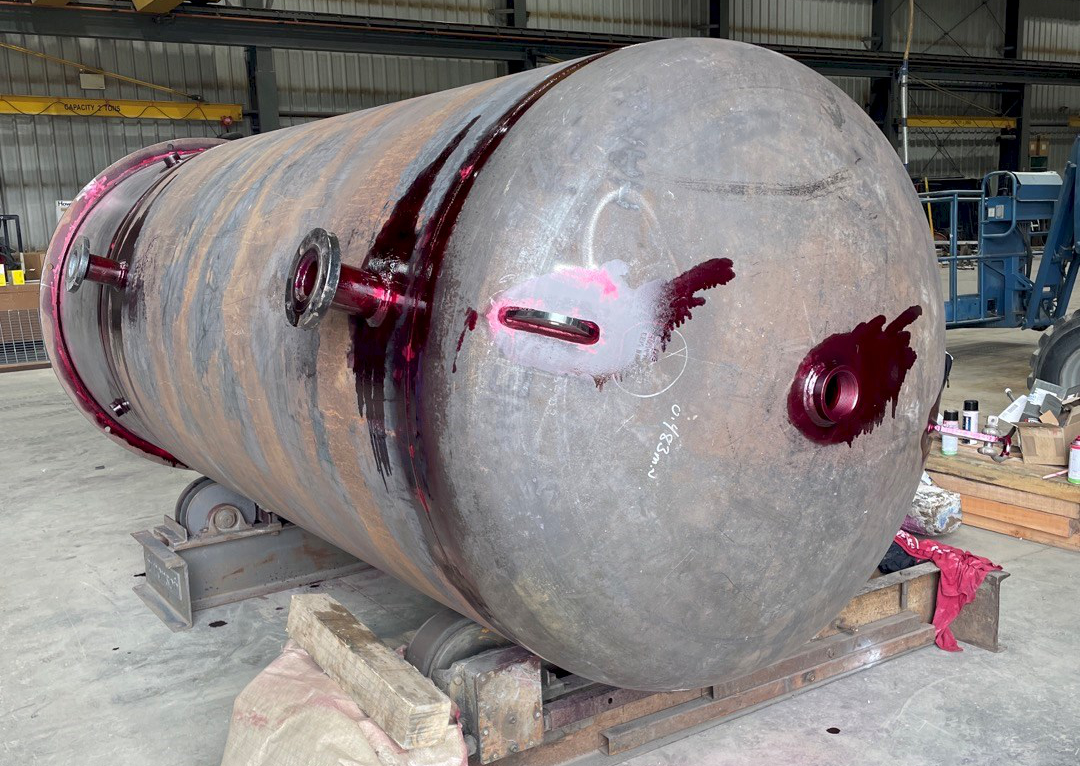The Relevance of Specialist Tank Welding Inspection Solutions
The Relevance of Specialist Tank Welding Inspection Solutions
Blog Article
A Detailed Introduction of Container Welding Evaluation Specifications and Methodologies for Improved Weld Quality and Efficiency
The significance of welding assessment criteria in the production of tanks can not be overstated, as they work as the backbone for making sure weld integrity and functional integrity. Various assessment strategies, consisting of visual evaluations and advanced non-destructive screening methods, are essential in identifying prospective problems that might jeopardize performance. Sticking to regulative requirements not only improves weld high quality however also alleviates the danger of pricey failures. As we check out the subtleties of these methodologies, it comes to be essential to take into consideration exactly how an organized approach can reinvent present practices and bring about significant renovations in outcomes.
Relevance of Welding Evaluation Requirements

Welding evaluation criteria incorporate a variety of requirements, consisting of material requirements, welding procedures, and qualifications of workers involved in the welding process. By enforcing these criteria, companies can methodically identify and remedy potential issues, therefore reducing the possibility of expensive repairs or catastrophic failings. Furthermore, strenuous assessment techniques cultivate a culture of responsibility and precision, motivating welders to preserve high degrees of craftsmanship.

Typical Welding Assessment Methods


Ultrasonic Evaluating (UT) is one more common strategy, utilizing high-frequency acoustic waves to spot inner imperfections that may not be noticeable externally. This approach is especially reliable for determining voids or inclusions within the weld metal. Magnetic Fragment Examining (MT) is likewise extensively made use of, specifically for ferromagnetic products, as it discloses surface area and near-surface flaws through the application of electromagnetic fields and ferrous bits.
In Addition, Liquid Penetrant Screening (PT) finds surface-breaking defects by applying a penetrant to the weld and afterwards making use of a programmer to draw out the penetrant. Each of these strategies adds to a detailed assessment approach, ensuring that welds meet the rigid high quality criteria needed in container building.
Governing Standards and Conformity
Regulative requirements and conformity are vital components in making certain the safety and integrity of welded frameworks in tank building and construction - Tank Welding Inspection. These criteria offer to develop minimum needs for product residential or commercial properties, welding procedures, and evaluation practices, thereby reducing the threat of structural failures and improving general efficiency
Trick organizations, such as the American Culture of Mechanical Designers (ASME) and the American Welding Society (AWS), supply standards that are widely adopted in the industry. Conformity with these standards not just ensures adherence to best practices yet additionally fulfills legal and legal responsibilities, securing the rate of interests of stakeholders.
Regulatory bodies typically mandate adherence to details codes, such as ASME Code Area IX for welding certifications and API 650 for bonded containers. These codes outline demands for welding techniques, certifications of workers, and testing methods to click here for info verify weld stability.
Normal audits and examinations are essential to maintaining conformity, as they aid recognize inconsistencies from developed requirements. Non-compliance can lead to significant fines, task delays, and safety and security dangers. Hence, a robust understanding of regulatory criteria and a commitment to compliance are extremely important in accomplishing top quality and durable welded storage tank frameworks.
Non-Destructive Examining Approaches
Just how can the honesty of bonded frameworks be guaranteed without triggering damage? Non-destructive testing (NDT) approaches supply a durable option, allowing examiners to assess weld quality without endangering the product - Tank Welding Inspection. Among one of the most common NDT techniques are ultrasonic testing (UT), radiographic testing (RT), magnetic bit testing (MT), and color penetrant screening (PT)
Ultrasonic screening employs high-frequency sound waves to discover internal problems and characterize material residential or commercial properties. It provides exact measurements and is particularly reliable for thick materials. Radiographic testing entails passing X-rays or gamma rays with the weld, creating photos that expose structural problems such as splits or voids. This method is indispensable for analyzing the stability of complicated welds.
Magnetic particle screening is matched for ferromagnetic materials, where magnetic areas reveal surface area and near-surface interruptions. Dye penetrant screening makes use of a liquid color to highlight surface-breaking defects, making it an effective method for non-porous materials.
Each of these NDT methods has distinct benefits, enabling thorough assessments customized to specific materials and welding procedures. By implementing these methods, sectors can guarantee the reliability and safety of bonded frameworks, ultimately enhancing overall efficiency.
Enhancing Weld Quality Through Inspection
Efficient examination plays a crucial role in enhancing weld top quality, acting as a crucial checkpoint in the manufacture process. By identifying prospective flaws early, inspections reduce the threat of compromised structural honesty and make sure compliance with sector requirements. Employing a combination of visual exams, non-destructive testing (NDT) methods, and mechanical assessments, inspectors can discover read this article concerns such as porosity, splits, and insufficient fusion.
Applying a robust examination procedure not just enhances the general quality of welds but also fosters a culture of accountability amongst welders and makers. Normal training and qualification of inspection workers guarantee that they are geared up with the required skills to identify and resolve possible troubles successfully. This positive method reduces rework and associated costs, eventually adding to project performance.
Additionally, detailed documentation of examination searchings for gives useful insights into reoccuring issues, promoting continual enhancement in welding techniques. By leveraging innovative technologies, such as automated ultrasonic testing or digital radiography, weld quality can be improved through extra exact assessments. Finally, a strenuous evaluation process is indispensable in attaining premium welds, ensuring safety, Check Out Your URL dependability, and durability in storage tank construction.
Final Thought
In verdict, the implementation of rigorous storage tank welding examination standards and approaches is necessary for ensuring weld integrity and performance. By making use of a combination of visual inspections, non-destructive screening approaches, and adherence to governing standards, organizations can properly determine and minimize prospective problems.
Report this page